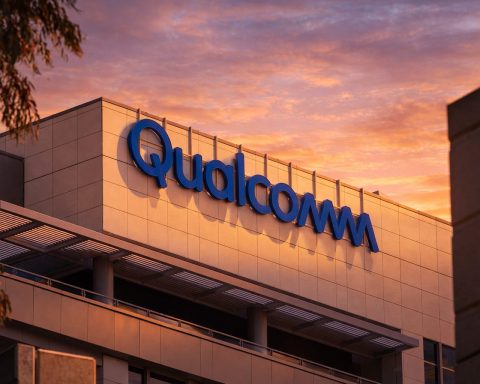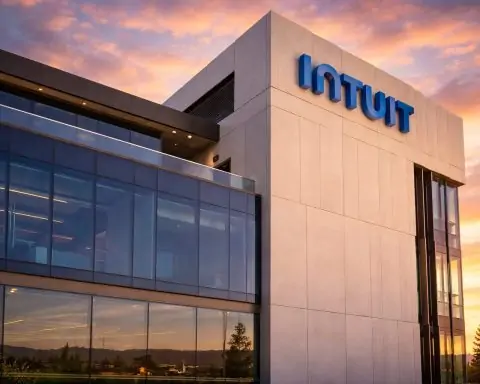- Amazon’s stock is trading around the mid-$210s per share as of Oct. 17, after a volatile week that saw it drop nearly 5% from about $228 amid a tech sector sell-off [1]. Year-to-date, AMZN is up roughly 3%, lagging the Nasdaq’s ~15% gain [2].
- In late September, Amazon settled an FTC investigation for $2.5 billion over alleged deceptive Prime sign-up practices – a record payout that removed a major legal “overhang” for the company [3]. Analysts and investors viewed the settlement positively for clearing this uncertainty [4].
- Amazon is doubling down on AI. At a Sept. 30 event it unveiled “Alexa+,” a generative AI upgrade to Alexa, alongside new Echo smart devices to showcase its capabilities [5]. The goal: finally monetize Alexa’s large user base with more powerful AI features [6].
- Amazon is also investing and partnering for growth – including a $4 billion stake in AI startup Anthropic to bolster AWS’s AI cloud offerings, and ad deals to power Netflix’s ad-supported tier and sell ads on Roku and Peacock [7].
- On the operations front, Amazon plans to cut up to 15% of its HR workforce to boost efficiency via AI [8], even as it hires 250,000 U.S. seasonal warehouse workers (matching last year) and commits $1 billion to pay raises for frontline staff [9].
- Wall Street remains bullish: ~45 of 46 analysts rate AMZN a “Buy,” with an average price target around $264 (~15% upside) [10]. Amazon’s Q3 results on Oct. 30 are expected to show ~11–13% sales growth [11], and some bulls even say it could hit a $3 trillion valuation in coming years if its cloud and AI momentum continues [12].
Stock Price & Recent Performance
Amazon.com, Inc. (NASDAQ: AMZN) has seen choppy trading in recent days. The stock fell sharply by about 5% on Oct. 13 amid a broader tech sell-off tied to renewed U.S.–China trade tensions [13]. After closing around $227 last week, shares dipped to the mid-$210s before stabilizing. Over the past week, AMZN oscillated roughly between $216 and $228 – holding above a support level near ~$215 but unable to break through resistance in the mid-$220s [14]. Traders noted the stock recently “rebounded off” those support levels as Amazon’s expansion announcements buoyed sentiment, though it remains below key trend lines (its 50-day average is ~$226) [15].
In a broader context, Amazon’s stock is barely positive for 2025 despite these swings. Year-to-date (YTD) the share price is up only about 3%, vastly underperforming major peers and indexes (the Nasdaq Composite is up ~15% in the same period) [16] [17]. At around $214 per share, AMZN sits roughly 10% below its all-time high of ~$242 reached in early February 2025 [18]. The relatively tepid performance reflects some investor caution as Amazon’s growth – particularly in its cloud division AWS – cooled this year relative to rivals, and its stock has traded mostly sideways while other tech giants saw double-digit gains [19]. (For instance, Microsoft and Alphabet shares have rallied strongly on robust cloud and AI growth, whereas Amazon has lagged [20].) In short, Amazon’s stock is off its highs and trailing the pack even as the company’s fundamentals remain solid, setting the stage for a closely watched year-end period.
Recent News & Catalysts
Regulatory Relief: One factor lifting some cloud over Amazon’s stock was a major legal settlement with the U.S. Federal Trade Commission (FTC). On Sept. 25, Amazon agreed to pay $2.5 billion to resolve an FTC investigation into alleged “dark patterns” that made it difficult for users to cancel Prime subscriptions [21]. The deal – the largest-ever consumer settlement by the FTC – includes about $1.5 billion in customer refunds and requires Amazon to simplify its Prime cancellation processes [22]. Importantly, this payout removed a significant uncertainty for Amazon. Analysts viewed the settlement as “removing a major overhang,” clearing a legal risk that had been weighing on the company [23]. Investors reacted with relief – tellingly, Amazon’s stock barely budged on the news [24], a sign that the market was expecting the outcome and sees the $2.5B fine as manageable (Amazon generates about that amount in sales every day or two) [25]. However, Amazon isn’t entirely out of regulators’ sights: the FTC’s separate antitrust lawsuit filed in 2023 – which seeks to break up parts of Amazon’s marketplace business – is still ongoing and poses a longer-term threat [26]. Internationally, Amazon got a bit more good news in Europe – in early October, an Italian court slashed a €1.13 billion antitrust fine (from 2021) roughly in half, to about €750 million [27] – but regulatory scrutiny remains a constant reality.
Product Launches & AI Initiatives: Amazon has been rolling out new products and AI features as it heads into the holiday season. At its fall hardware event on Sept. 30, the company unveiled “Alexa+,” a next-generation AI-enhanced version of its Alexa voice assistant designed to engage in more natural, conversational interactions. Alexa+ is powered by generative AI and will be built into a lineup of new Echo devices (including upgraded Echo smart speakers and displays) that Amazon introduced at the event [28]. The company also debuted new Kindle Scribe e-readers (one featuring a color display) and a refreshed line of Ring security cameras and Fire TV software [29] [30]. All these gadgets highlight Amazon’s push to infuse AI into its consumer products – the Alexa+ devices perform more on-device AI processing using custom Amazon chips, aiming to improve privacy and responsiveness. The broader goal is to finally monetize Alexa’s massive user base by making the assistant more capable (and, eventually, a platform for services and shopping) [31]. Early October brought another promotional push: Amazon held its first “Prime Big Deal Days” sale on Oct. 7–8, essentially an extra Prime Day event intended to jump-start holiday shopping with exclusive discounts. Analysts expect this two-day sale will provide a modest bump to Q4 sales, supplementing the traditional year-end holiday surge [32]. (Amazon’s own guidance and commentary suggest Big Deal Days will be a key contributor to year-end growth alongside Black Friday and Cyber Monday.) While some shoppers and media noted the deals were mixed, the event underlines Amazon’s strategy of leveraging Prime membership perks to boost revenue.
Investments & Partnerships: In parallel with new products, Amazon is making strategic investments and partnerships to fuel growth. Most notably, it announced a $4 billion investment in Anthropic, a San Francisco-based AI startup (maker of the Claude chatbot), in a deal that makes Amazon Web Services the primary cloud provider for Anthropic’s AI models [33]. This partnership is designed to bolster AWS’s position in the booming generative AI arena, ensuring that cutting-edge AI startups help drive computing workloads to Amazon’s cloud. Amazon is also expanding its global cloud footprint – for example, it plans to invest €1 billion to build new AWS data centers and logistics hubs in Belgium by 2027 [34] – to meet growing demand in Europe.
At the same time, Amazon’s advertising business (which now generates over $40 billion in annual revenue) is extending its reach via new partnerships. The company struck deals to power Netflix’s ad-supported streaming tier and to sell advertising on third-party platforms like Roku’s devices and NBCUniversal’s Peacock service using Amazon’s ad tech tools [35]. By serving as the behind-the-scenes technology for ads on other popular streaming services, Amazon can grow its ad revenues beyond the ads shown on its own properties. These moves signal Amazon’s ambition to integrate its ad platform across the media landscape, leveraging its data and tech to compete with advertising rivals Google and Meta on a broader playing field.
Labor & Efficiency Moves: Even as it invests in high-tech growth, Amazon continues to restructure parts of its workforce to control costs. Reports in mid-October revealed Amazon plans to lay off as much as 15% of the staff in its People Experience and Technology (PXT) division – essentially its global HR and recruiting organization [36]. With over 10,000 employees in that unit, the cuts could number in the thousands. This move aligns with CEO Andy Jassy’s drive to boost efficiency (he warned employees that AI will streamline many jobs) and follows earlier corporate layoffs of around 27,000 employees in 2022–2023 [37]. Analysts note that Amazon’s rapid adoption of AI for internal processes means “the need for hiring will diminish over time,” as one expert put it [38].
Paradoxically, even as it trims white-collar roles, Amazon is hiring aggressively for frontline operations. The company announced it will bring on about 250,000 seasonal workers across its U.S. warehouses and logistics network for the peak holiday period – roughly matching its seasonal hiring last year [39]. This contrast underscores that the efficiency cuts are targeted at corporate and support functions, not the fulfillment centers that handle surging holiday demand. Amazon has also approved roughly $1 billion in pay raises for its hourly warehouse and transportation employees [40], a move to retain talent and improve worker morale amid a competitive labor market. In short, Amazon is pruning in some areas while expanding in others: cutting back-office fat and doubling down on customer-facing capacity ahead of the crucial holiday quarter.
Analyst Outlook & Stock Forecasts
Wall Street analysts are broadly optimistic about Amazon’s trajectory, despite the stock’s recent underperformance. According to surveys, nearly all analysts covering AMZN have a bullish stance – roughly 45 out of 46 analysts currently rate the stock a “Buy” (with only a single Hold and 0 Sells) [41]. The consensus 12-month price target sits around $264 per share, which implies roughly 15% upside from recent prices [42]. Price predictions do vary – current targets range from the mid-$190s up to around $305 at the high end [43] – but the overwhelming sentiment is positive. Many firms have raised their targets following Amazon’s strong results over the summer. For example, Goldman Sachs recently reiterated Amazon as a top pick and bumped its target price to $275 (from $240) on the belief that Amazon’s cloud (AWS) growth and advertising strength are underappreciated by the market [44]. Morgan Stanley likewise added Amazon to its “Top Picks,” highlighting the company’s push into new markets like online groceries – a $600 billion U.S. food retail segment that Amazon is addressing by building out cold-storage delivery capabilities in thousands of cities [45]. Wedbush Securities, for its part, pointed to “very robust enterprise AI demand” flowing into AWS as a reason to stay bullish [46]. In sum, analysts argue that Amazon’s multiple growth engines – from AI and cloud to digital ads and e-commerce – are only in the early stages of re-accelerating, and many see the recent share pullback as a buying opportunity [47].
Near-Term Catalysts: The next major catalyst for the stock will be Amazon’s Q3 2025 earnings report, due on October 30. The company’s own guidance calls for net sales of $174–179.5 billion in Q3 (a +10–13% year-over-year increase), and Wall Street forecasts are in the same ~11–13% growth ballpark [48]. If Amazon delivers as expected, it would mark a third consecutive quarter of double-digit revenue growth – a clear sign of post-pandemic reacceleration. This growth is coming from across Amazon’s business: robust demand in AWS cloud services, steady expansion in online retail and third-party marketplace sales, and surging ad revenues. Profitability has also improved significantly thanks to cost cuts; Amazon’s operating margin hit ~13% last quarter, up from mid-single digits two years ago [49]. Looking at the all-important holiday quarter (Q4) ahead, analysts are optimistic Amazon can maintain momentum. They anticipate mid-teens percentage revenue growth in Q4 [50], aided by initiatives like the October Prime Big Deal Days, ongoing Prime membership gains, and a strong consumer appetite for holiday shopping. Amazon’s ability to handle the seasonal rush efficiently – and capitalize on it – will be key to hitting those targets.
Long-Term Forecasts: Beyond this year, expectations remain high that Amazon will continue to churn out solid growth. Consensus projections call for double-digit revenue increases into 2026, and many experts project Amazon can achieve on the order of 15–20% annual EPS growth over the next five years [51]. The main drivers: Amazon’s high-margin service segments are growing faster than its traditional retail sales. AWS, while its growth rate has moderated to ~17% recently, could re-accelerate if enterprise IT spending on cloud picks up again (analysts note that Microsoft’s and Google’s cloud units are currently growing ~30%+ as AI investment booms [52]). Meanwhile, Amazon’s advertising business – now about a $40 billion/year segment – is expanding ~20% year-over-year [53], contributing substantially to profits given its ~30%+ margins. These pieces, combined with the core e-commerce and Prime ecosystem, form what observers often call Amazon’s “flywheel” – a self-reinforcing cycle of retail, cloud, and content services driving customers into Amazon’s platform. That flywheel effect is expected to keep spinning: analysts believe Amazon’s diversified model can sustain healthy growth and improve free cash flow as recent efficiency moves take hold [54]. Indeed, some bullish prognosticators even argue Amazon could become the next $3 trillion company within a couple of years if it executes well on its opportunities in AI and cloud computing [55]. (Hitting that milestone would require roughly a $300+ stock price, implying significant upside if those optimistic scenarios pan out.)
Challenges & Risks
Despite the upbeat outlook, Amazon faces significant challenges that could impact its stock performance. In cloud computing, competition is intensifying: rivals Microsoft Azure and Google Cloud have been growing even faster than AWS – for instance, Azure’s revenue spiked ~39% year-on-year last quarter, compared to AWS’s +17% [56]. These competitors are pouring resources into AI capabilities and aggressively courting enterprise customers, which could pressure AWS’s market share over time. In e-commerce, traditional retailers are stepping up their online game. Walmart, for example, has invested heavily in e-commerce and its Walmart+ membership program to chip away at Amazon’s lead. While Amazon still controls an estimated 38% of U.S. online retail vs Walmart’s ~6–7% share [57], the gap has been slowly narrowing. Other emerging rivals – from Shopify (enabling independent merchants) to relative newcomers like TikTok and Temu in social shopping – are also vying for consumers’ attention.
Furthermore, regulatory scrutiny remains a wild card. Amazon will likely be navigating antitrust challenges and stricter rules in multiple countries for years to come. And even as Amazon invests tens of billions in new technologies (AI, streaming content, satellite internet, etc.), such massive spending could compress its margins if those bets take time to pay off [58]. The company’s ability to execute on cost discipline while funding innovation will be crucial. In short, Amazon must contend with both external headwinds (like regulators and rivals) and internal balancing acts (growth vs. profitability). How well it manages these challenges will help determine whether the stock’s optimistic forecasts materialize.
Investors won’t have to wait long for a progress report – Amazon’s Q3 earnings on Oct. 30 will shed more light on how the company is navigating its competitive and economic landscape, setting the tone for AMZN stock as the crucial holiday season approaches. [59] [60]
References
1. ts2.tech, 2. ts2.tech, 3. ts2.tech, 4. ts2.tech, 5. ts2.tech, 6. ts2.tech, 7. ts2.tech, 8. ts2.tech, 9. ts2.tech, 10. ts2.tech, 11. ts2.tech, 12. ts2.tech, 13. ts2.tech, 14. ts2.tech, 15. ts2.tech, 16. ts2.tech, 17. ts2.tech, 18. ts2.tech, 19. ts2.tech, 20. ts2.tech, 21. ts2.tech, 22. ts2.tech, 23. ts2.tech, 24. ts2.tech, 25. ts2.tech, 26. ts2.tech, 27. ts2.tech, 28. ts2.tech, 29. ts2.tech, 30. ts2.tech, 31. ts2.tech, 32. ts2.tech, 33. ts2.tech, 34. ts2.tech, 35. ts2.tech, 36. ts2.tech, 37. ts2.tech, 38. ts2.tech, 39. ts2.tech, 40. ts2.tech, 41. ts2.tech, 42. ts2.tech, 43. ts2.tech, 44. ts2.tech, 45. ts2.tech, 46. ts2.tech, 47. ts2.tech, 48. ts2.tech, 49. ts2.tech, 50. ts2.tech, 51. ts2.tech, 52. ts2.tech, 53. ts2.tech, 54. ts2.tech, 55. ts2.tech, 56. ts2.tech, 57. ts2.tech, 58. ts2.tech, 59. ts2.tech, 60. ts2.tech







